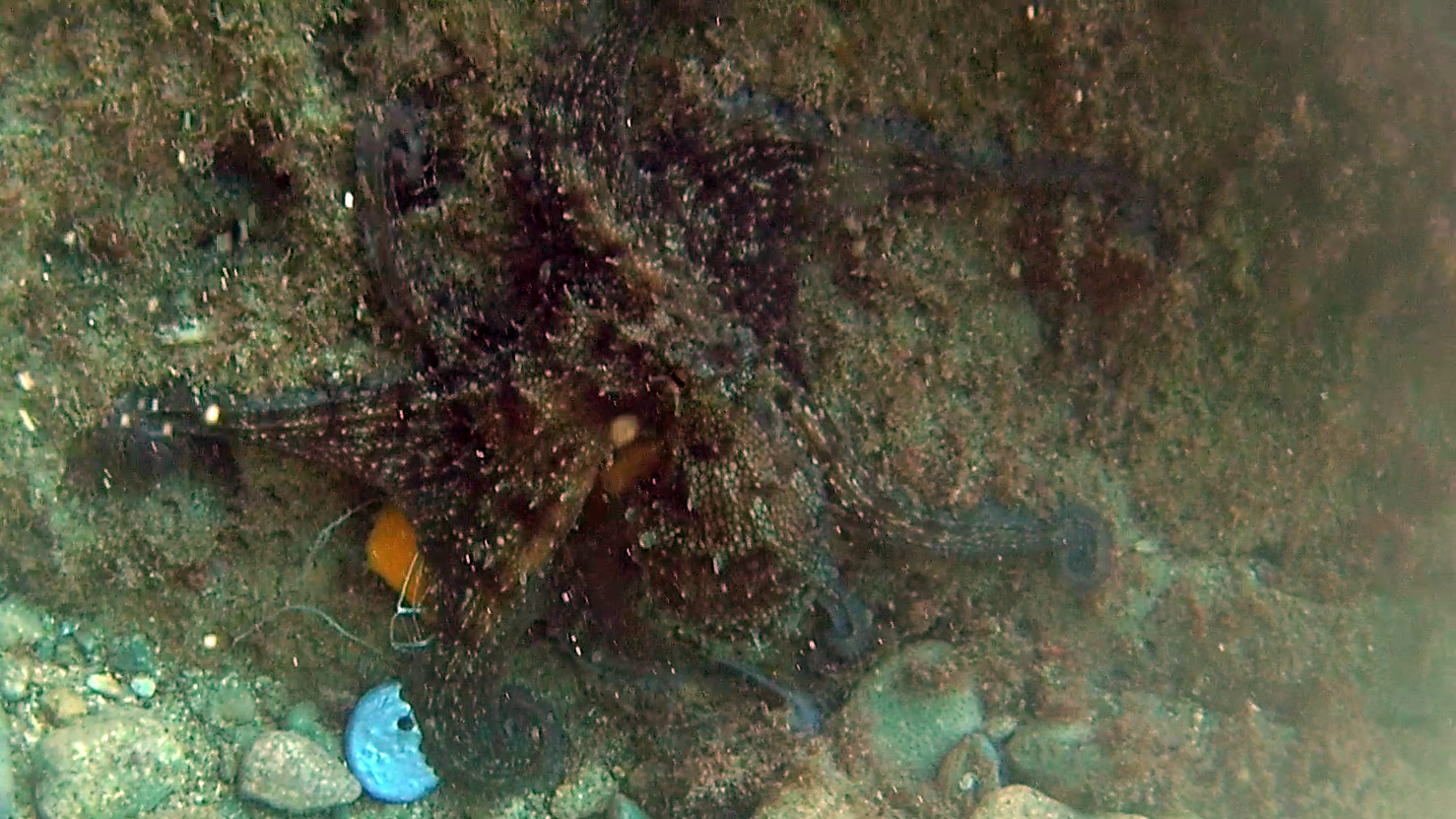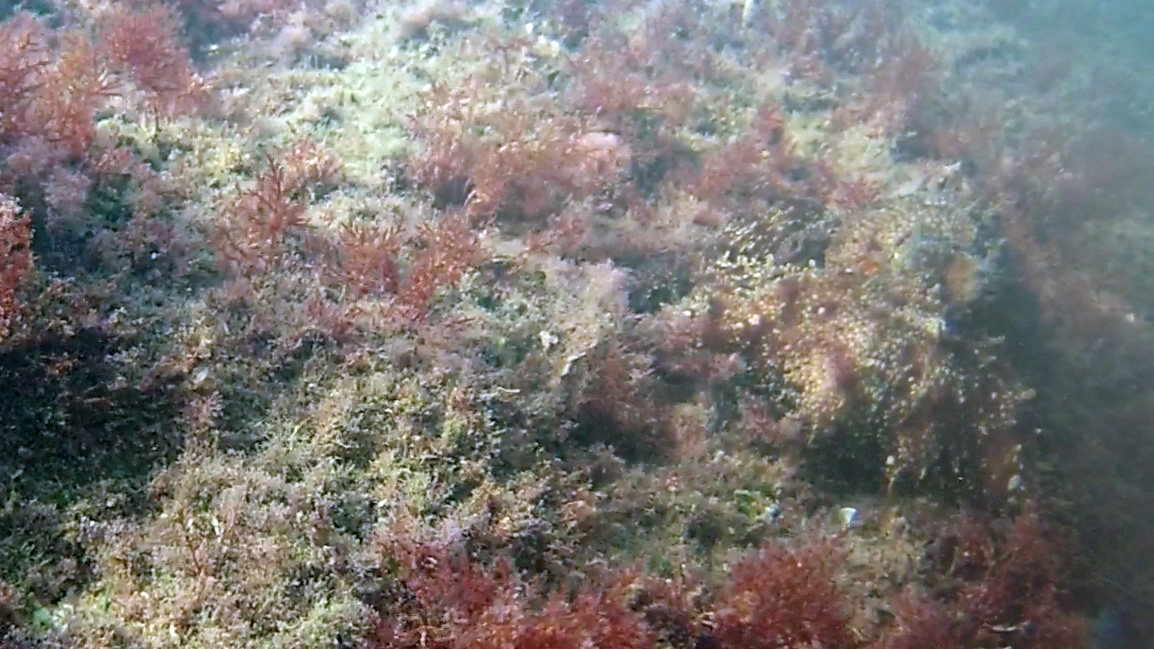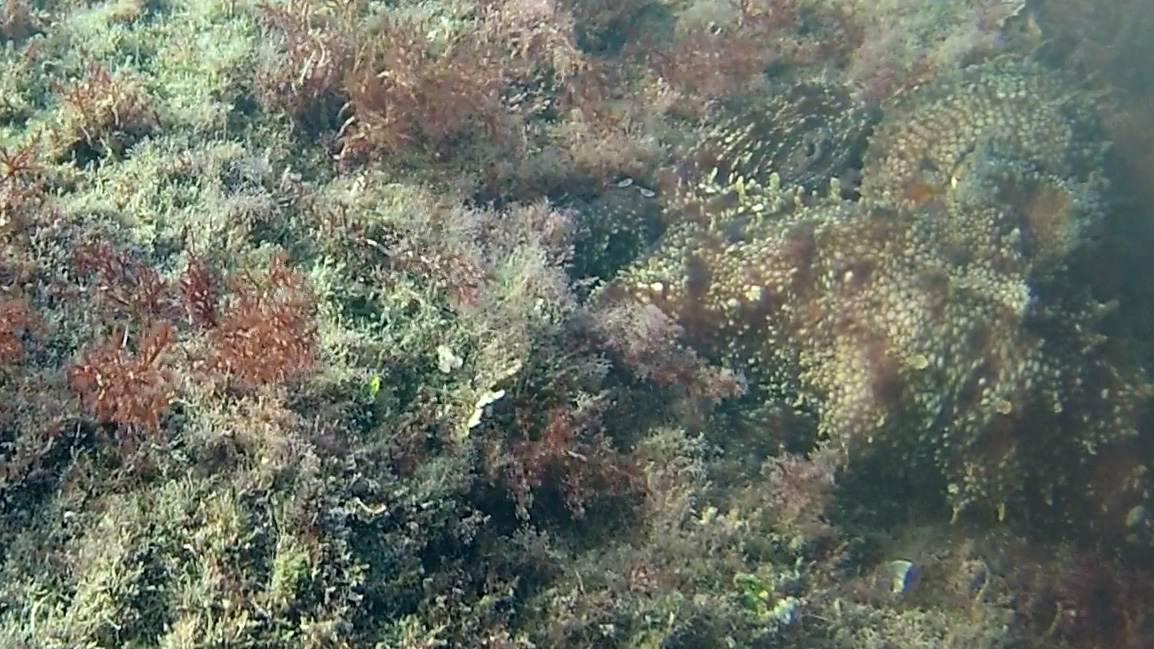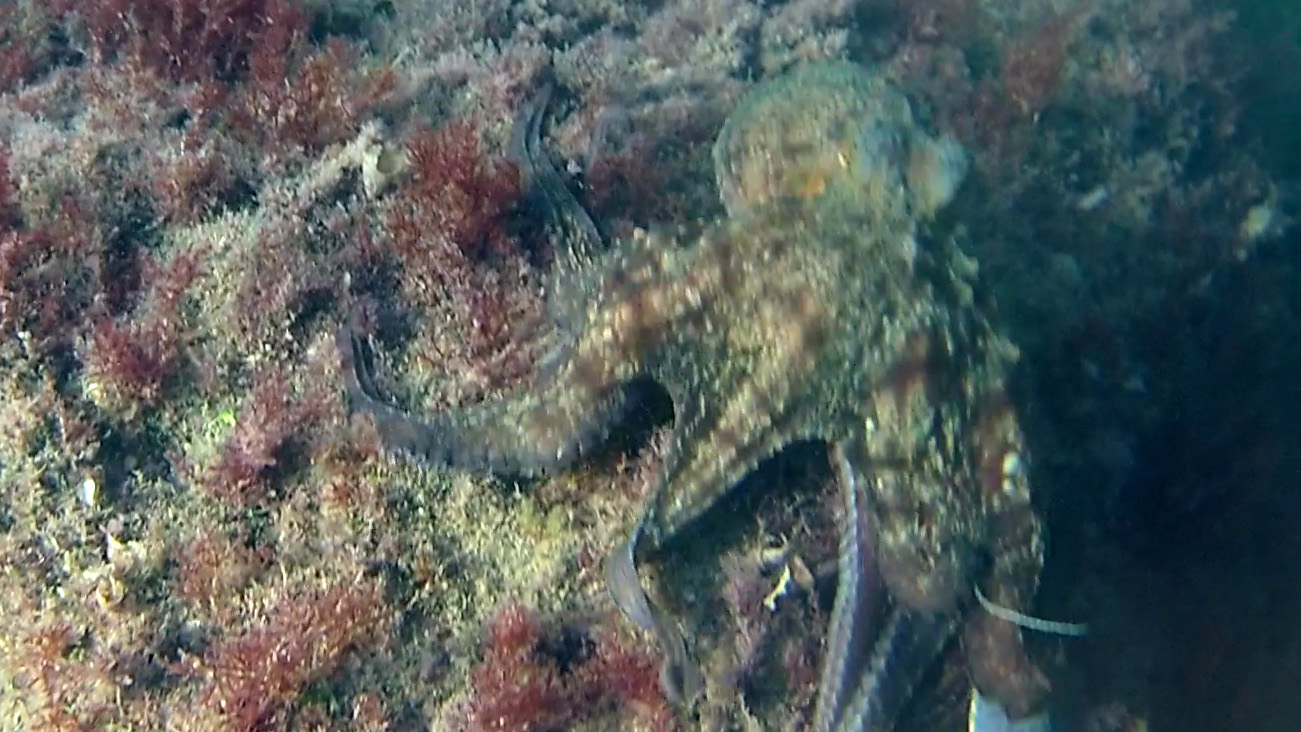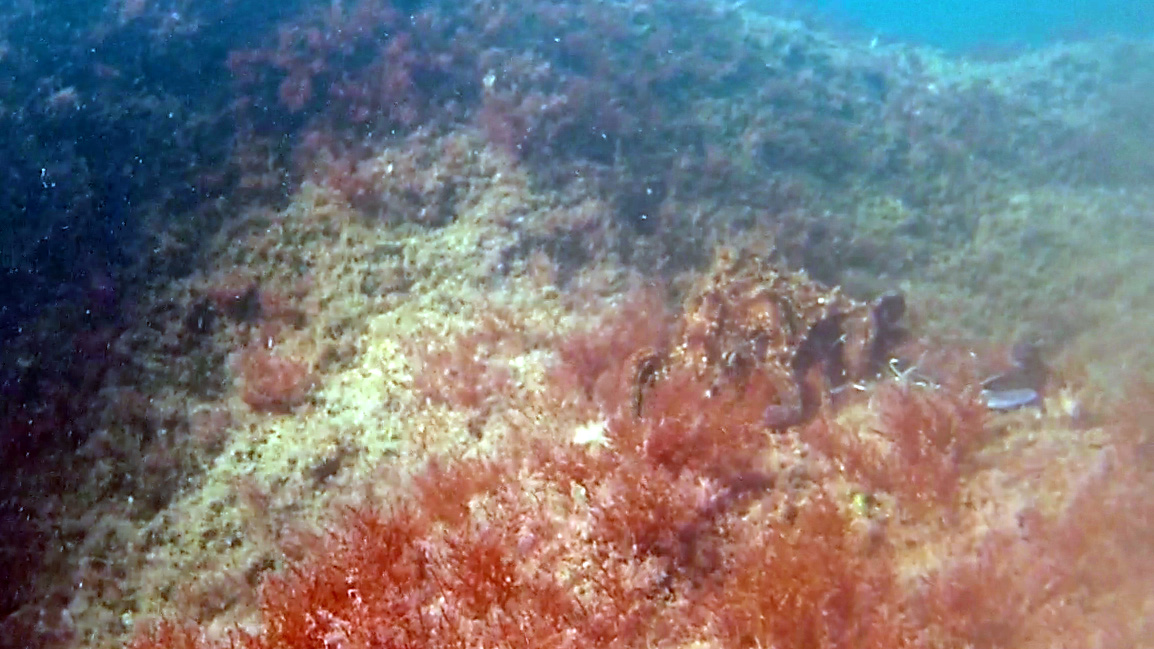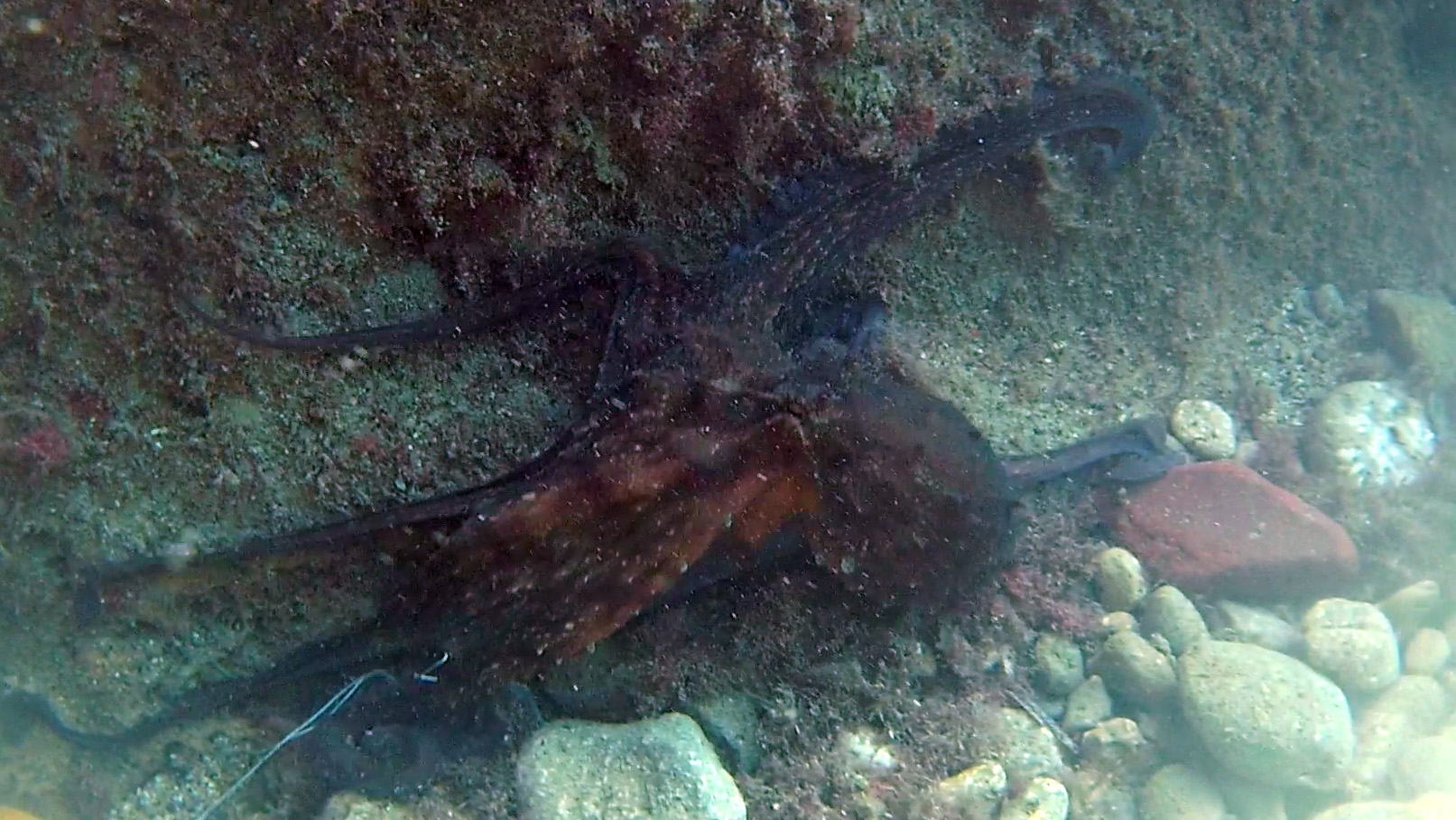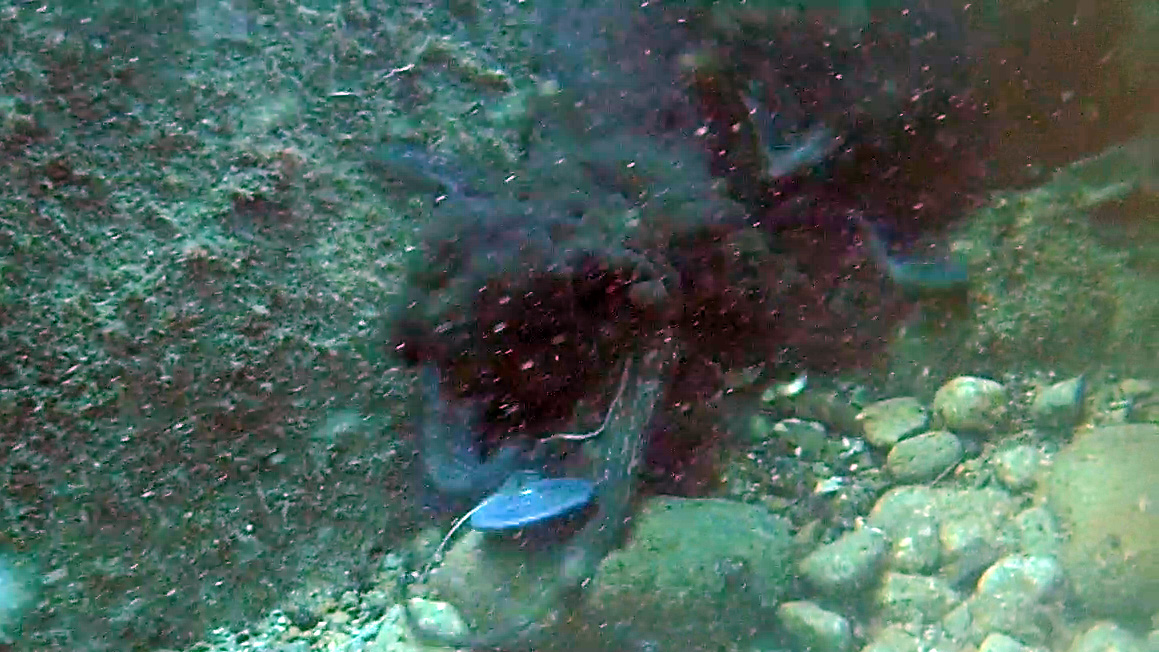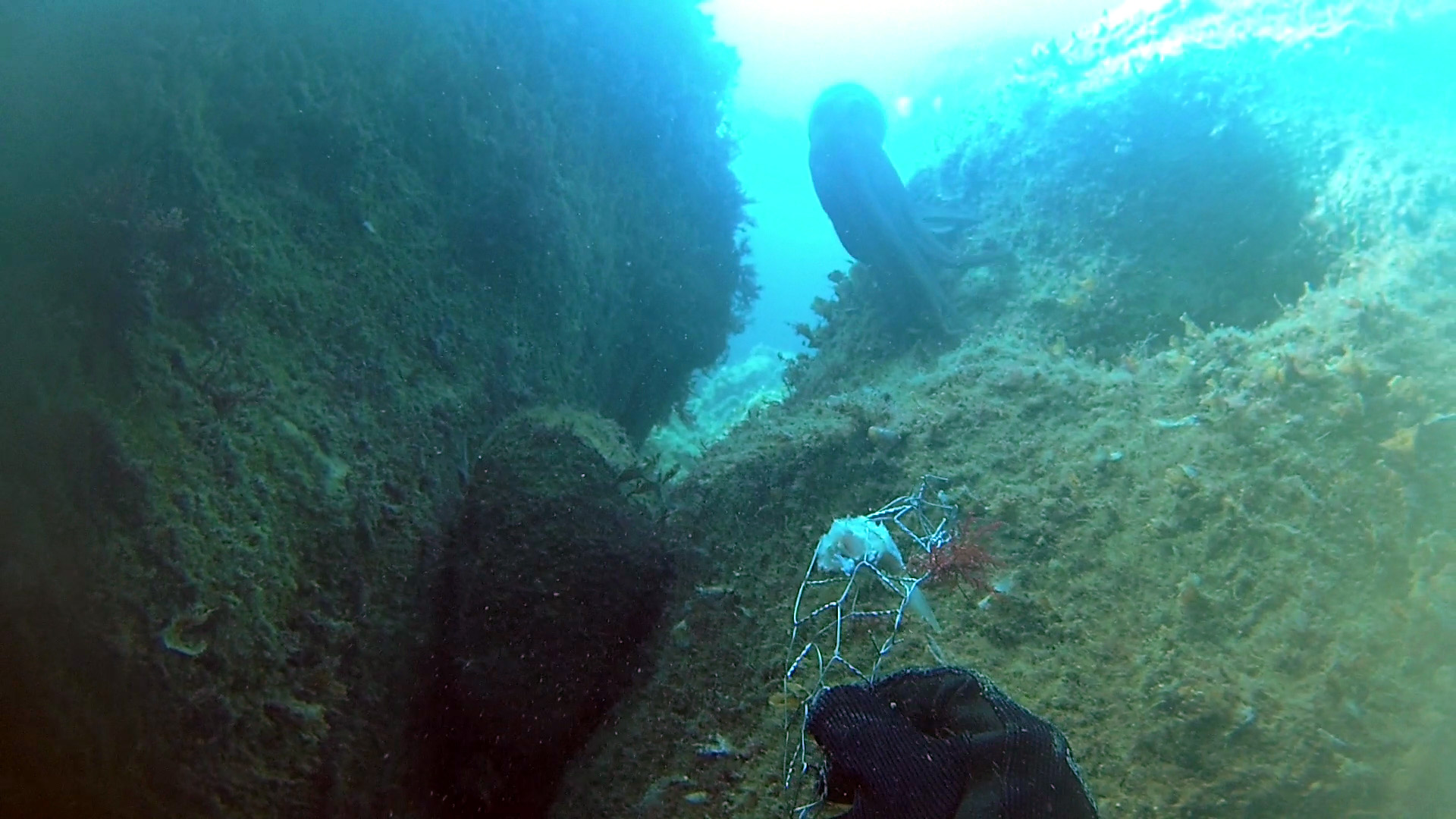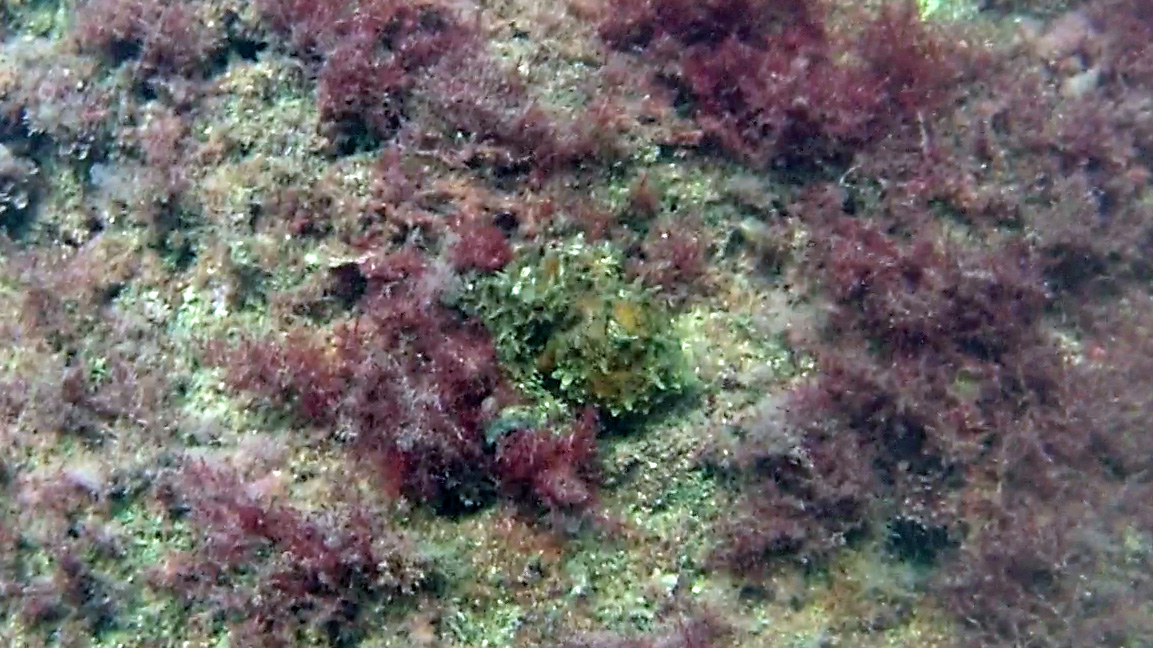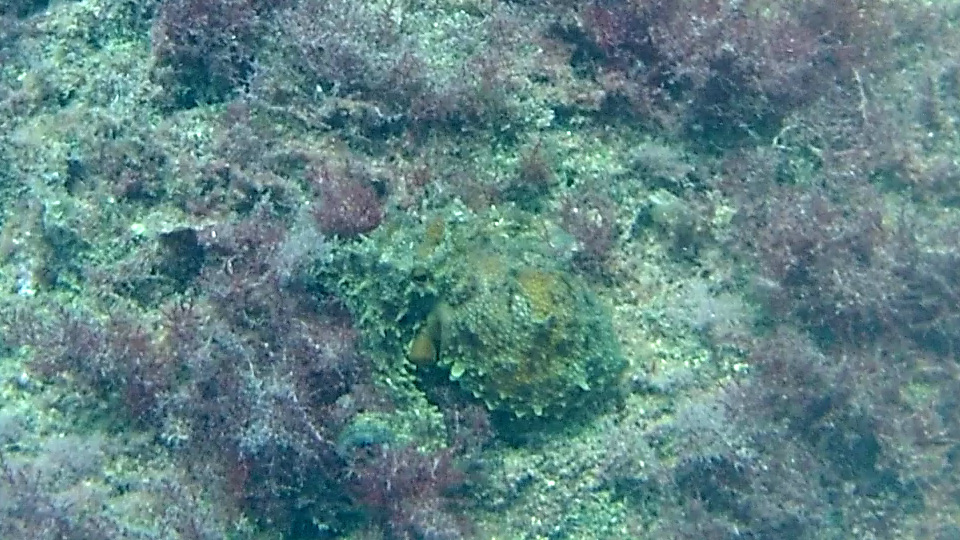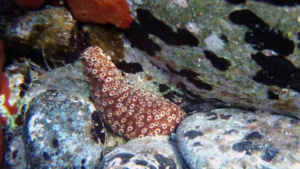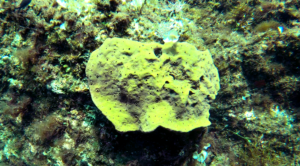Polpo Comune Octopus vulgaris
Octopus, common octopus (Octopus vulgaris Cuvier, 1797), could not miss in our bulletin board. It is actually one of the nicest and frequent meetings we can do in our seas. Octopus never misses a chance to prove his intelligence and versatility of character. The video documents the encounter with two octopuses: the first one had just gotten an easy meal probably breaking with the sharp mouth / beak the line of a “polpara” him sadly destined.
The meeting does not seem to upset him that much since it will drag on for a long time the meal conquered in an attempt to eat it escaping the annoying sub. The second one is safe octopus of his mimicry undisturbed observes the diver until after noticing being seen, will escape through a puff of ink.
The approach has occurred in apnea, then without breathing apparatus and without the emission of air bubbles which would surely scared the octopus, it could then lead to a very close distance about 30/40 cm without frightening, also the security his mimicry has meant that to get used to the presence of the diver then to be able to reconnect several times.
Gallery
The common octopus (Octopus vulgaris) is a mollusc belonging to the class Cephalopoda. Octopus vulgaris is the most studied of all octopus species. It is considered cosmopolitan, that is, a global species, which ranges from the eastern Atlantic, extends from the Mediterranean and the southern coast of England, to at least Senegal in Africa. It also occurs off the Azores, Canary Islands and Cape Verde Islands. The species is also common in the Western Atlantic. The common octopus hunts at dusk. Crabs, crayfish, and bivalve molluscs (two-shelled, such as cockles) are preferred, although the octopus eats almost anything it can catch. It is able to change colour to blend in with its surroundings, and is able to jump upon any unwary prey that strays across its path. Using its beak, it is able to break into the shells of shelled molluscs. Training experiments have shown the common octopus can distinguish the brightness, size, shape, and horizontal or vertical orientation of objects.
The octopus uses gills as its respiratory surface. The gill is composed of branchial ganglia and a series of folded lamellae. Primary lamellae extend out to form demibranches and are further folded to form the secondary free-folded lamellae, which are only attached at their tops and bottoms. The tertiary lamellae are formed by folding the secondary lamellae in a fan-like shape. Water moves slowly in one direction over the gills and lamellae, into the mantle cavity and out of the octopus’ funnel. The octopus has three hearts, one main two-chambered heart charged with sending oxygenated blood to the body and two smaller branchial hearts, one next to each set of gills. The circulatory circuit sends oxygenated blood from the gills to the atrium of the systemic heart, then to its ventricle which pumps this blood to the rest of the body. Deoxygenated blood from the body goes to the branchial hearts, which pump the blood across the gills to oxygenate it, and then the blood flows back to the systemic atrium for the process to begin again. Polpo Comune Octopus vulgaris
(extract from Wikipedia)
 English
English Italiano
Italiano
